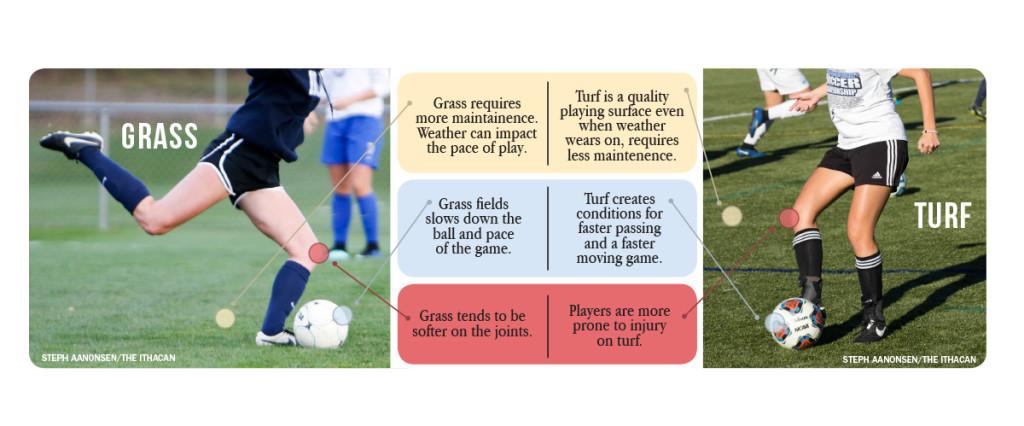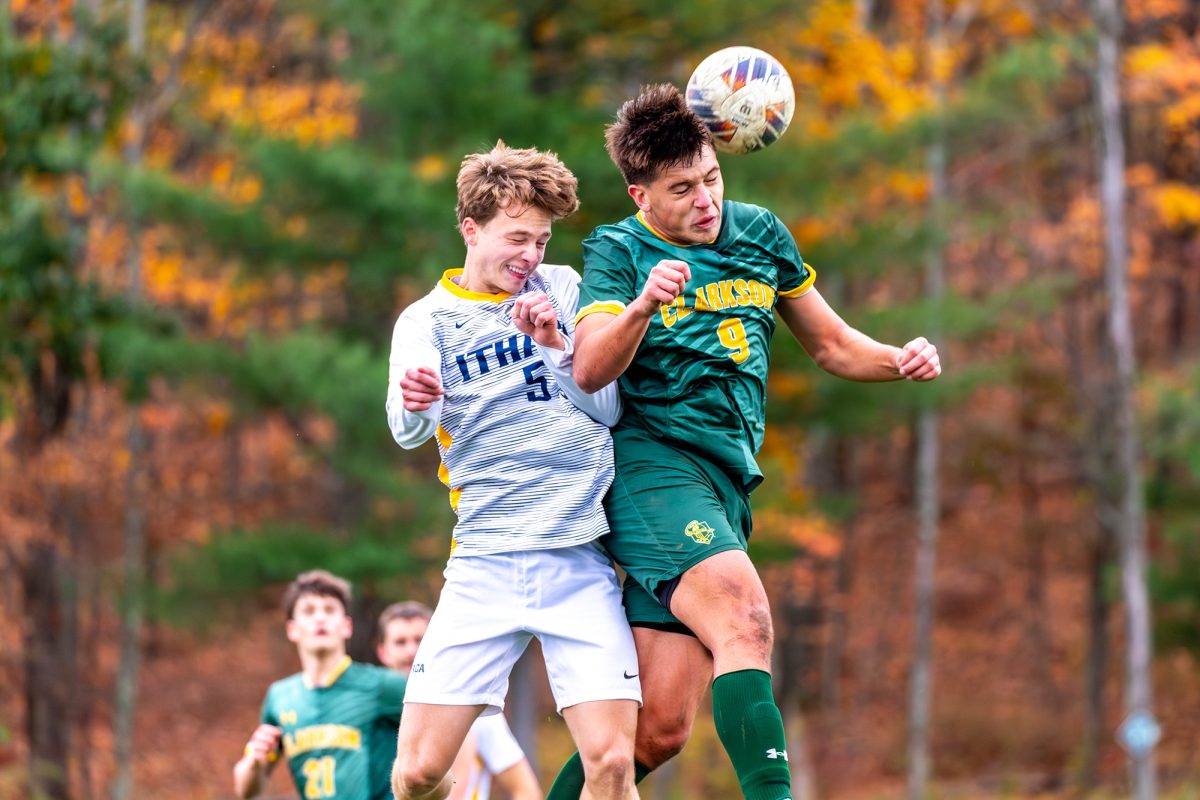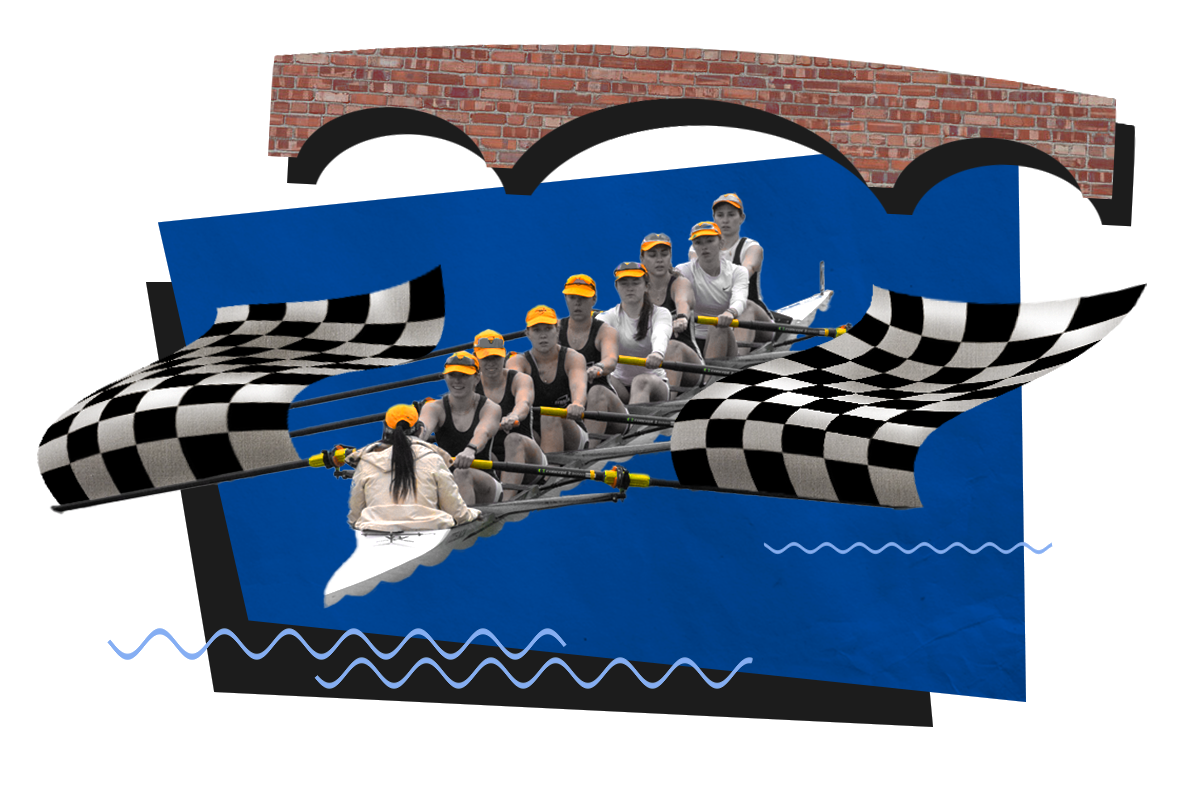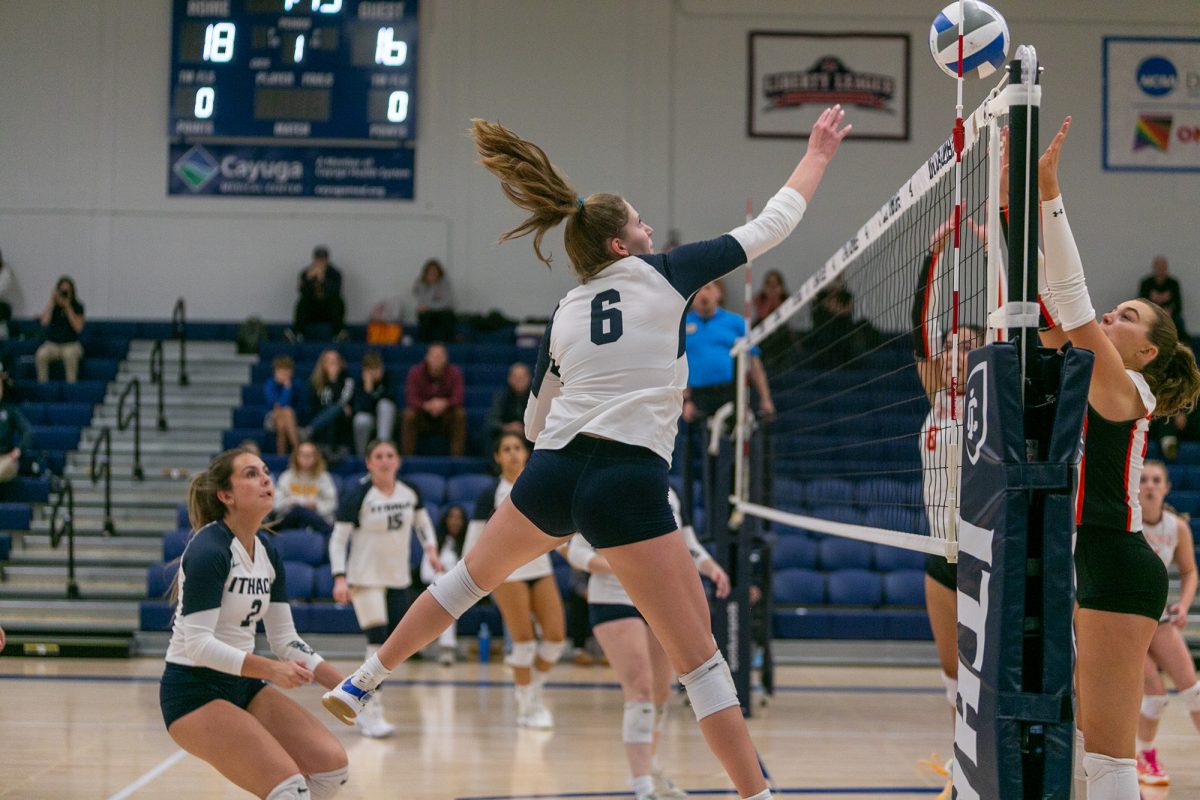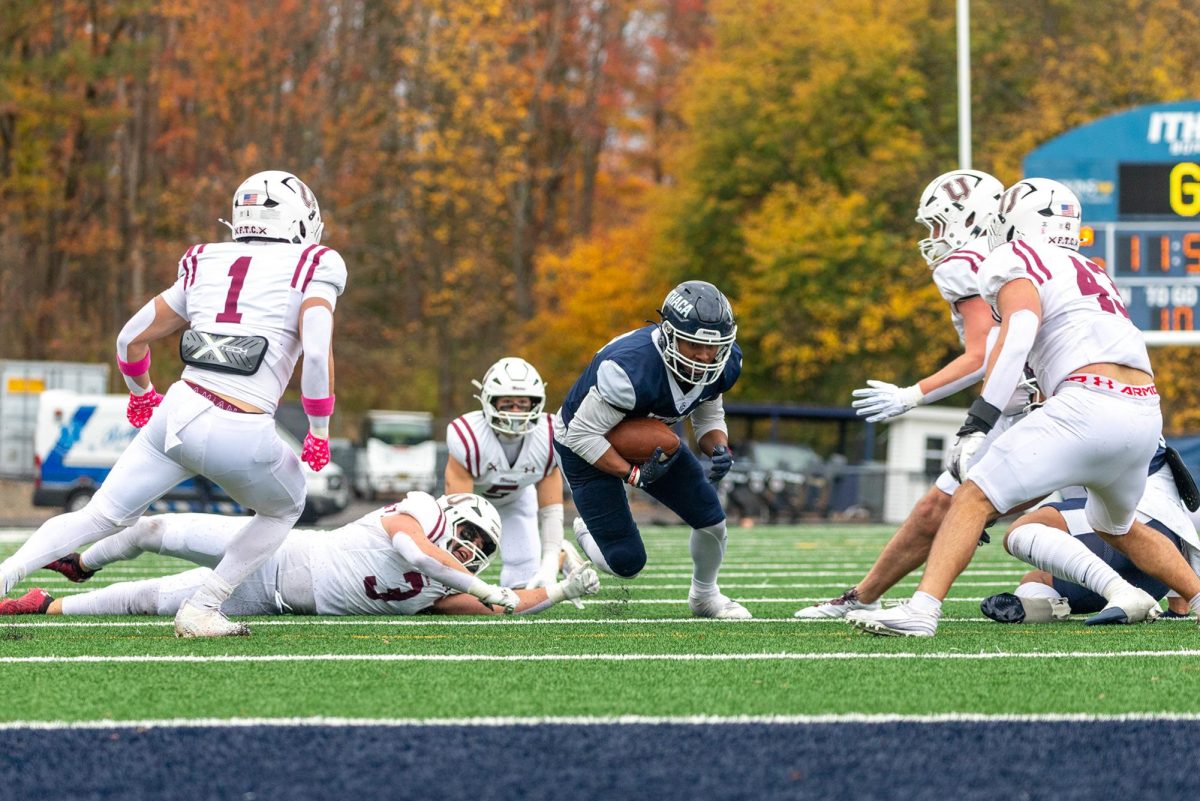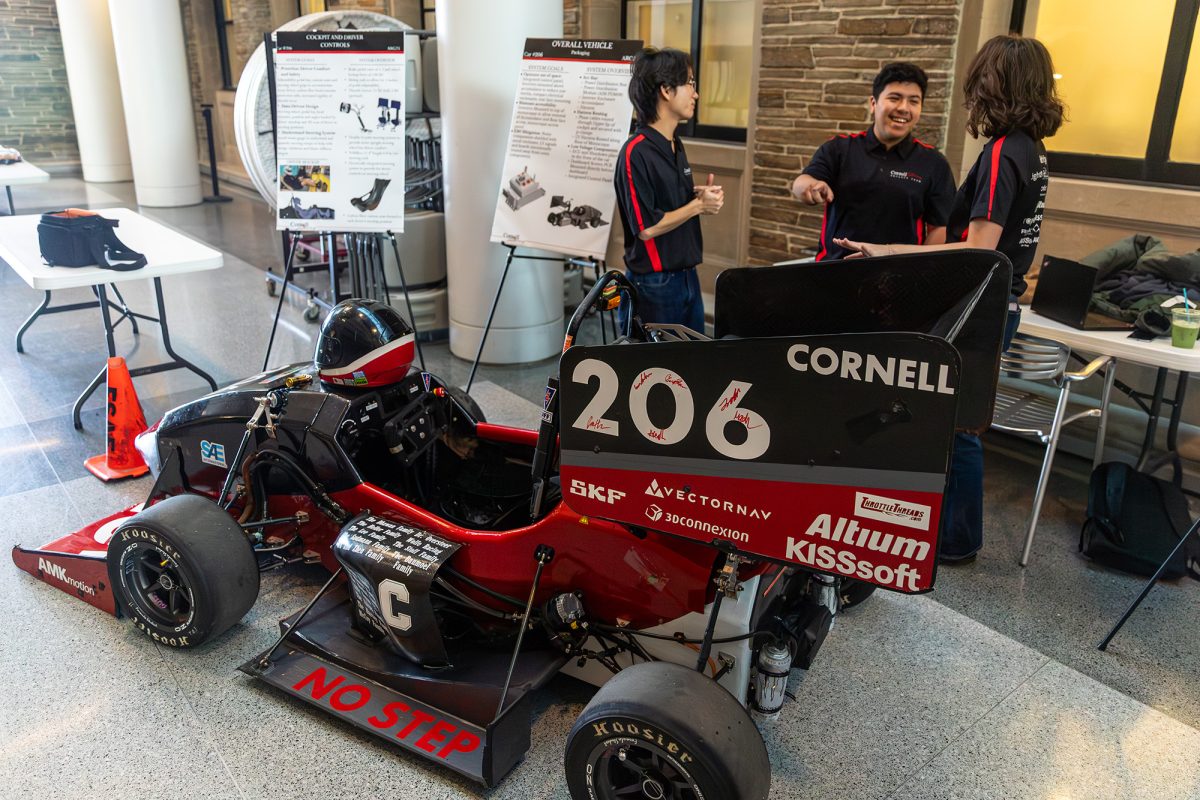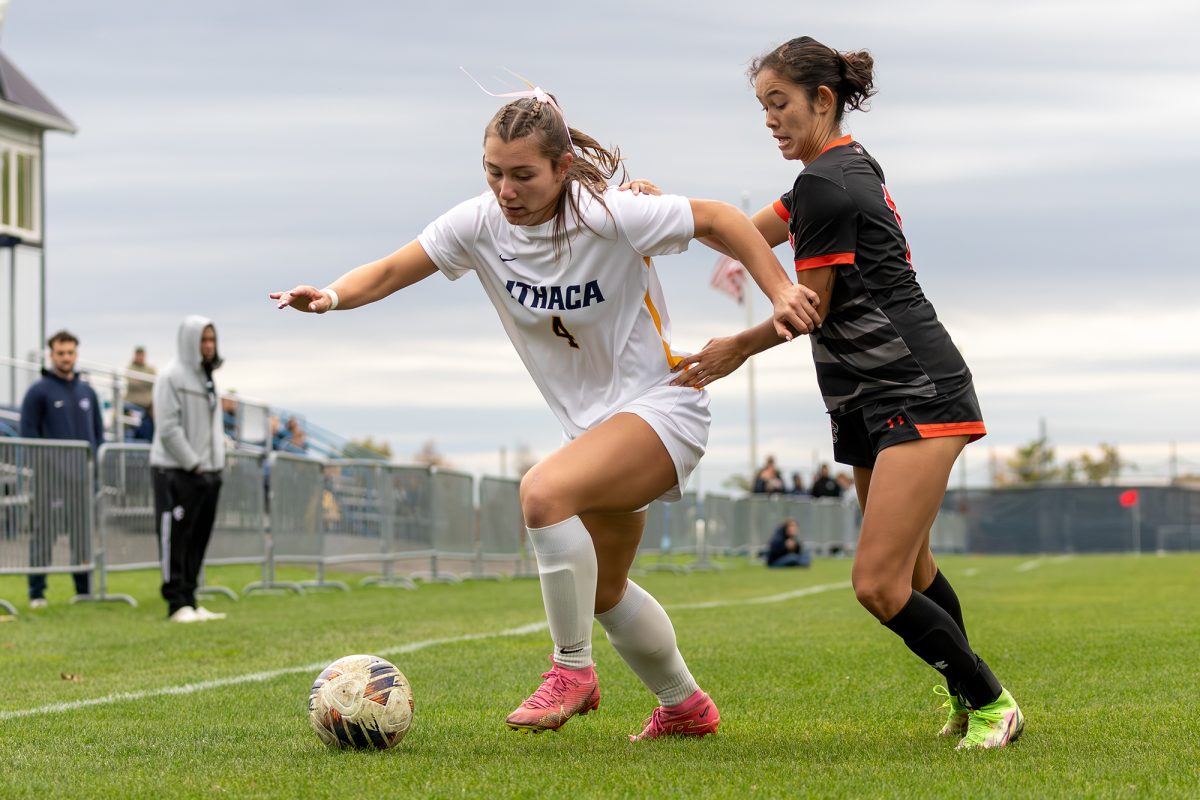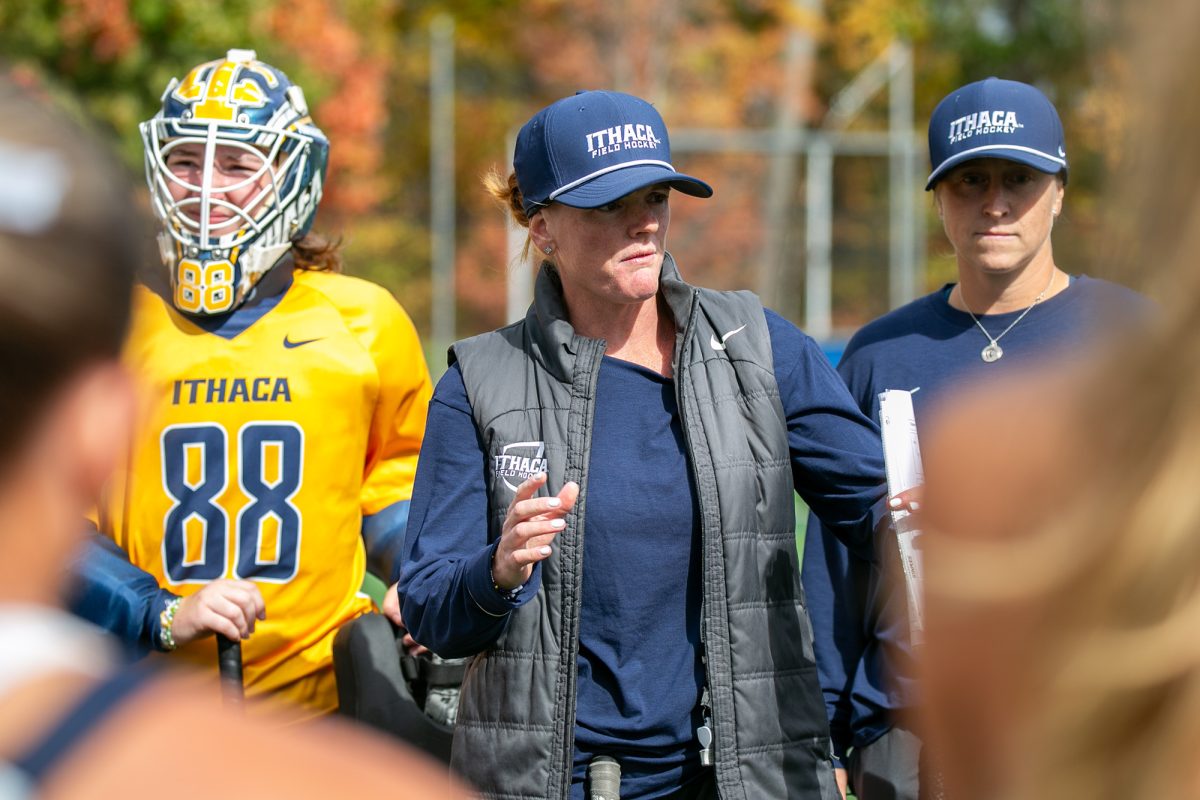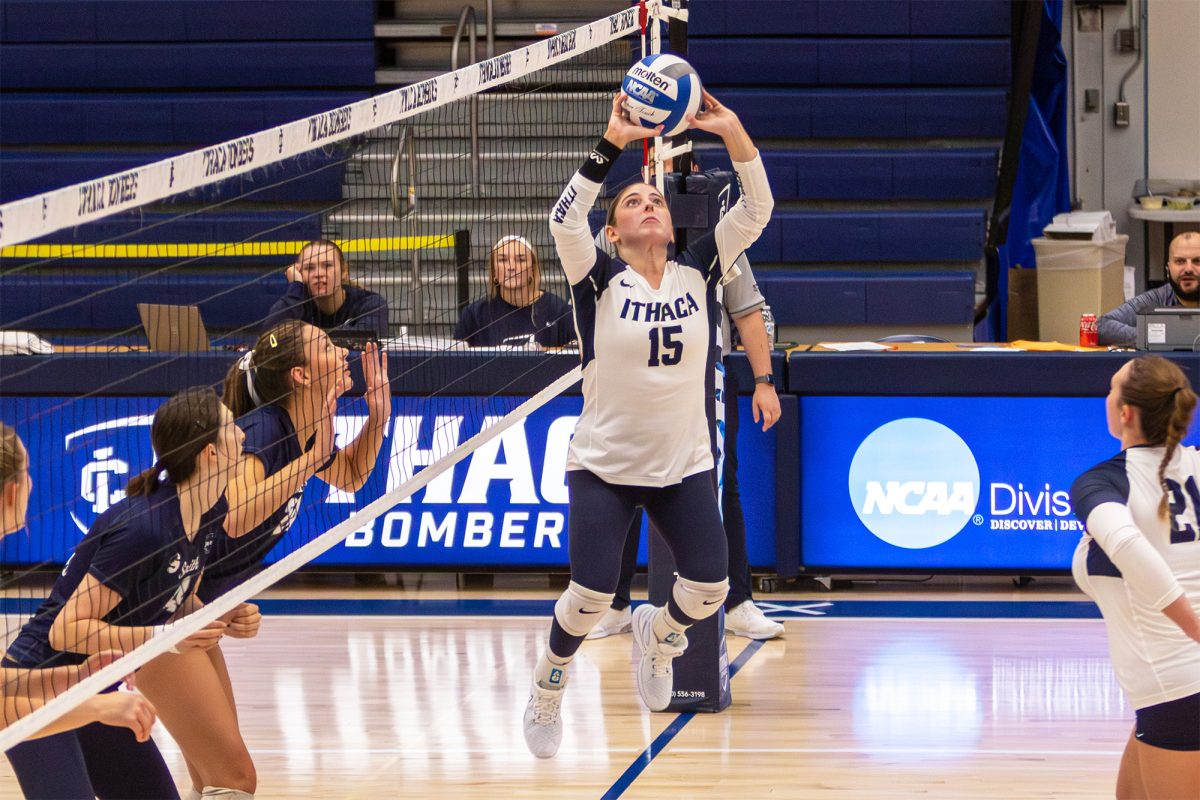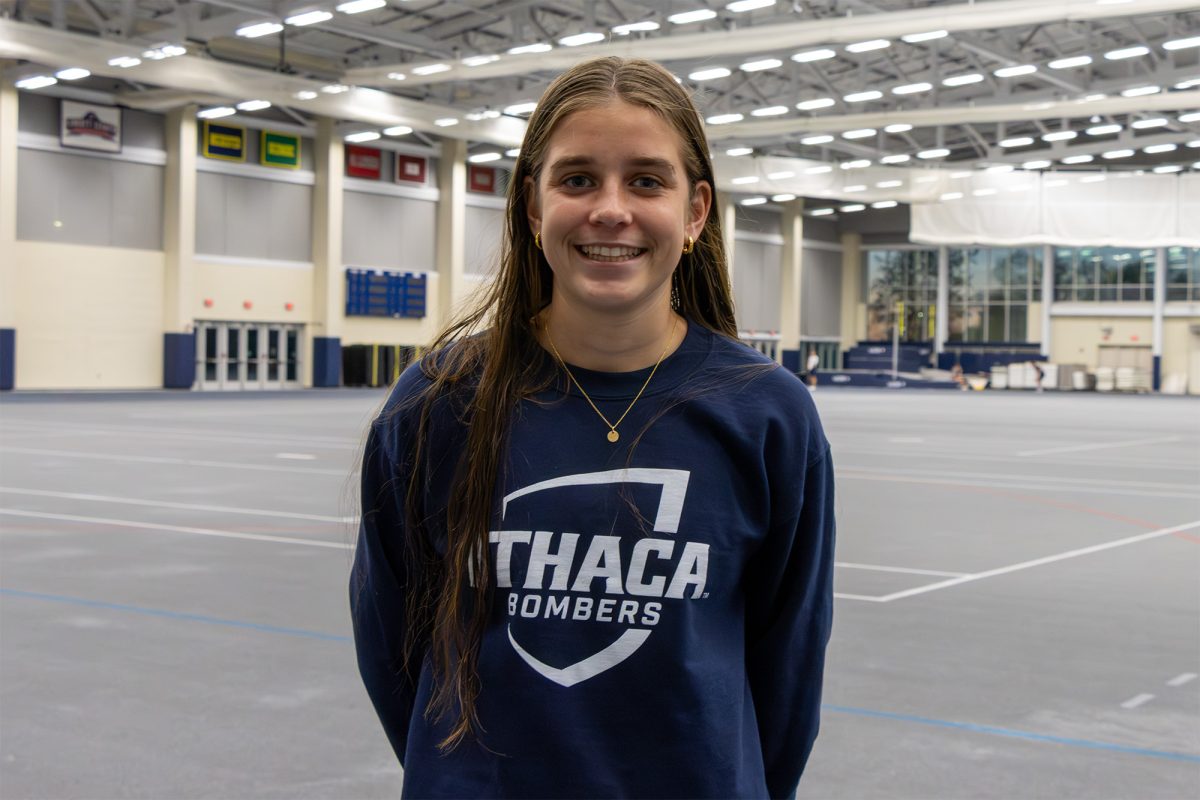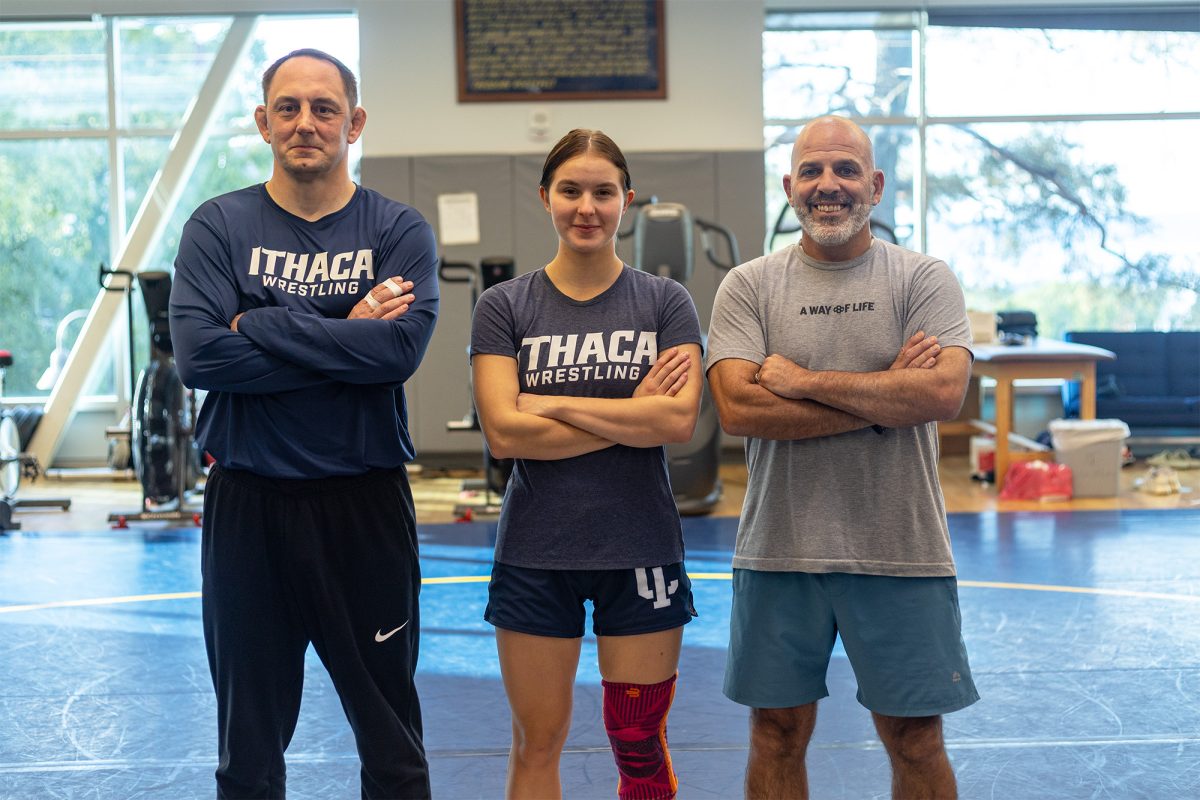Since the beginning of the program in 1981, the Ithaca College women’s soccer team has played on a grass field. However, in recent years, many schools have transitioned to turf due to the affordability and maintenance of turf fields.
In 2001, the team’s home field was renamed from Upper Terrace Field to Carp Wood Field.
Since then, the field hosted the 1998 NCAA women’s soccer Final Four, as well as the 2014 Empire 8 Tournament and multiple NCAA playoff games.
Head coach Mindy Quigg said it’s important to her that the field is made of grass and not artificial turf.
“I prefer grass because, traditionally, soccer is played on grass, and I think it’s truer to the nature of the game,” Quigg said. “It’s where it is meant to be played.”
Lately, many of the Bombers’ away competitions have been on turf fields. Many collegiate programs have transitioned from grass to turf due to a lack of space as well as cheaper maintenance prices, Quigg said.
However, within the Empire 8, the majority of schools have maintained grass fields. Alongside the Bombers are Elmira College, Hartwick College, Nazareth College and Utica College, which have grass fields. The teams that have transitioned to artificial turf are Alfred University, Houghton College, St. John Fisher College and Stevens Institute of Technology.
Jill McCabe, head women’s soccer coach and associate athletic director at St. John Fisher, said she disagrees with Quigg on the topic of playing surfaces and prefers to play on their turf field in Growney Stadium because of the pace and the quality of the surface.
“We are a technical team that a large turf field is typically an advantage for us over less technical teams,” McCabe said. “There are few quality grass fields in the Northeast, and as the season and weather wears on, the grass does not create a great surface to play on.”
On Sept. 19–20, the team took part in a tournament in Rochester, New York, in which all matches were played on turf. Quigg said playing games on turf sets a different pace for the team.
“I think it definitely affects us. It’s a different game,” Quigg said. “It becomes a bit more direct on the turf, and that’s not really our style.”
Junior defender Aimee Chimera said the team definitely feels more comfortable playing on grass due to the feel of the playing surface.
“I think that we slow the game down a little on the grass field and play to feel better and play better through balls,” she said.
In the days following up to playing a match on a turf field, Quigg said she tries to get in practice time at Higgins Stadium turf to prepare the team.
“What we’ve been doing is playing a lot of one- or two-touch and trying to get the turf for a couple of hours when we can,” Quigg said. “When we are on the turf, we do a lot of technical work on it. I think it’s beneficial when we go to play games on turf, and the players feel like it is, even if it’s just mental.”
However, this is difficult because of the large number of varsity and club sports at the college. The only slots usually available to the team are 6–8 a.m. or late in the evening, Quigg said. She added that changing the players’ practice schedule drastically messes up their sleep schedules and therefore their game play.
Not only does the turf change the style of play for the Bombers, but it also physically affects their bodies. Chimera said the constant change from grass to turf makes her and her teammates’ legs sore.
“I know a lot of girls on the team had trouble with their knees and ankles, and the difference in the surface definitely affects recovery,” Chimera said. “Grass tends to be softer on the joints and is the better option when preventing injuries and soreness.”
Dr. Michael Freitas, associate professor of clinical orthopedics and team doctor for the Western New York Flash, has done research on the difference between grass and turf in relation to injuries and said there is not enough research out to determine the difference.
Quigg said she has found that her team is more prone to injury when playing on turf. These injuries originate in how the player’s feet plant differently and the amount of give that the surface provides.
Although it is hard to tell how the difference between playing on turf and grass affects all aspects of soccer, one thing is for sure: The Bombers aren’t looking to give up their grass field anytime soon.
“The women’s soccer team will definitely never transition to turf,” Chimera said. “I don’t think that Coach Quigg would ever want to give up our beautiful grass field.”


